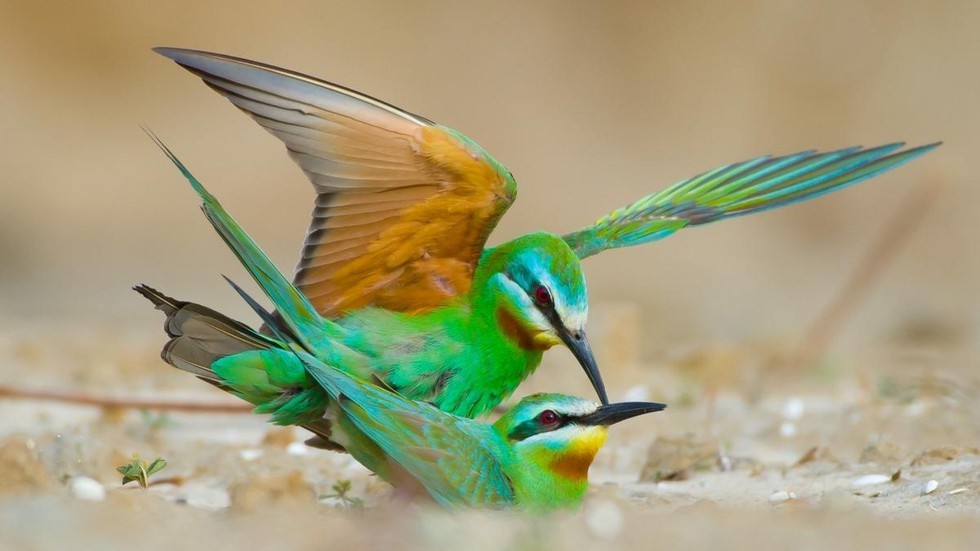
Blue-cheeked Bee-eater

24.02.2025
Blue-cheeked Bee-eater
|
For Prelims: About Blue-cheeked Bee-eater |
Why in the news?
Recently, the first breeding site of the Blue-Cheeked Bee-eater (Merops persicus) in peninsular India has been discovered in the saltpans of Aandivilai near the Manakudy Mangroves in Kanniyakumari district.
About Blue-cheeked Bee-eater:
- It is a near passerine bird in the bee-eater family, Meropidae.
- It was historically known as passage migrant and winter visitor in India.
- Behaviour: It may choose to nest solitarily or in small, loose colonies of up to ten individuals. It is also known to share colonies with European bee-eaters.
- Breeding Range: Its breeding was primarily recorded in regions such as Nile Delta, Pakistan and Iran while its wintering grounds include parts of Africa.
- Habitat: This bird favors sub-tropical semi-desert regions dotted with sparse trees, such as acacias, for breeding.
- In its breeding grounds, this species occupies semi-desert, steppe, dunes, saline pans, cultivation, thorn woodland and sandy slopes with small gulleys, ravines, quarries, pits and embankments.
- It breeds mainly in sand deserts near bodies of water fringed with reeds and tamarisks.
- During the non-breeding season, it inhabits a wide variety of greener habitats including savanna, broad river valleys, woods, lakeshores, swamps, ponds, dams, waterworks and cultivation.
- Conservation status:
- IUCN: Least Concern
Source: The Hindu
Consider the following statements regarding the Blue-Cheeked Bee-eater Bird:
Statement-I: It is a near passerine bird found in sub-tropical semi-desert regions.
Statement-II: It breeds only in the Nile Delta and some parts of Africa.
Which one of the following is correct in respect of the above statements?
A.Both Statement-I and Statement-II are correct, and Statement-II is the correct explanation for Statement-I.
B.Both Statement-I and Statement-II are correct, and Statement-II is not the correct explanation for Statement-I.
C.Statement-I is correct, but Statement-II is incorrect.
D.Statement-I is incorrect, but Statement-II is correct.
Answer C